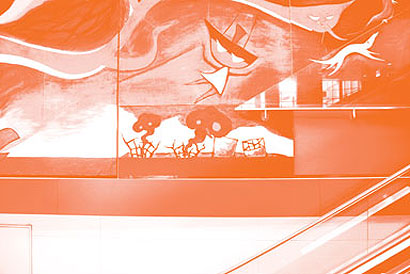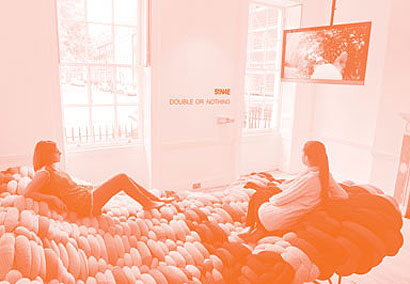|
Julian Worrall is a writer and assistant professor at Waseda University in Japan and an Icon contributing editor. Also an architect, he worked for OMA.
Arab Spring, Indignati and Occupy popular protest movements (top image)
After decades of dissipation, 2011 was the year that public space finally rediscovered its ancient and true vocation – as the crucible of politics. From Tahrir Square in Cairo to Zuccotti Park in New York to St Paul’s in London, the quicksilver of social media has been injected into the sclerotic veins of the urban body politic to revolutionary effect. Reports of the death of public space would appear to be premature – it’s just waking up from a long consumption-induced coma.
Metabolism: The City of the Future, Mori Art Museum, Tokyo
An exhilarating trawl through the archive of the metabolists, the band of techno-utopian futurists who sought to turn post-war Japan into a vast playground of bio-mimetic urban structures and systems. Whether floating on water, spiralling into the air, or networking across the land, their proposals envisaged a future that was as Japanese as it was hyper-modern. As Japan ponders its post-tsunami future, this show is a shout from the past to “make no little plans”.

credit Courtesy of Mori Art Museum
Shiroto-no-Ran and Chim Pom artist-activists and anti-nuclear provocateurs, Tokyo
The Fukushima nuclear meltdown and its aftermath has propelled artistic and activist energies to a pitch not seen since the late 1960s. On the activist side is Shiroto-no-Ran (“Amateur Revolt”), which assembled dancing crowds of 20,000 in Tokyo’s Koenji. Neo-dadaesque group Chim Pom, meanwhile, sealed the soixante-huitard connection by “art-jacking” Taro Okamoto’s Myth of Tomorrow, an explosive anti-nuclear mural of 1968 now installed in Shibuya station, with their own paintings of Fukushima’s twisted reactor carcasses.

credit Chim-Pom
51N4E: Double or Nothing, Bozar, Brussels
Assured yet laced with doubt, dry but whetted with surrealistic glimpses, the exhibition of Belgian practice 51N4E at Bozar in Brussels opened a window on to the small but fragrant garden of contemporary architecture in Europe’s broken heart. Like the city whose geographic co-ordinates provide its name, 51N4E’s work is an improbable mix of the radical and conservative, bearing a refined insouciance punctuated by the glint of an intellectual razor. Invigorating for its hints of a worldview beyond the rational/irrational divide.

credit Courtesy of Bozar
The Shape of Things to Come, Saatchi Gallery, London
The term “sculptural” these days carries a rather pejorative sense for architects, to the extent that it is often preceded by the word “merely”. But this muscular show of new tendencies in sculpture was a reminder of how vivid and diverse the practice of sculpture is. Here were smashed-up cars, luminous scribble and spaceframes, chthonic animals, chunks of indeterminate matter, and awe-inspiring colossi. “Merely architectural” is no doubt these sculptors’ put-down of choice.

credit David Batchellor
Teshima Art Museum, Seto Inland Sea, Japan
An extraordinary apparition emerging from rice fields high above Japan’s Inland Sea, this creation by architect Ryue Nishizawa and artist Rei Naito may be called a museum, but is really an exquisitely sensitive device for apprehending nature at its most profound. Pristine and abstract, yet infused with animate flows of water, wafts of air, and the lives of tiny invertebrates, this place transports you so close to the trembling lip of transcendence that it would be better termed a shrine.

credit Iwan Baan
|
|
Image
George Henton
Words
Julian Worrall
|



















